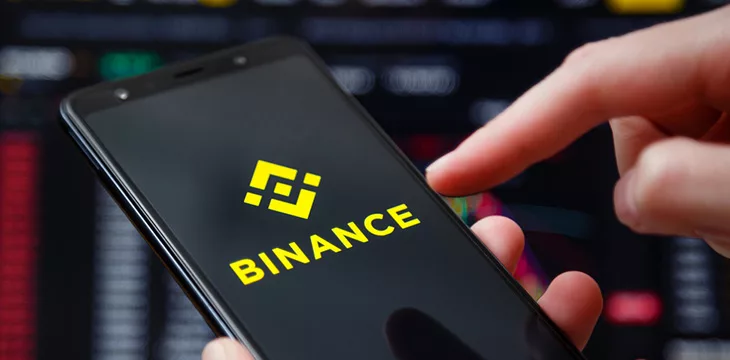|
Getting your Trinity Audio player ready...
|
Binance’s U.S.-based exchange ran out of BCH tokens last week, adding weight to allegations that the company continues to play fast and loose with customer assets.
On July 7, Binance.US issued a notice to customers regarding a “temporary shortage in the concentration of BCH on the BCH network.” The statement left many confused as to what exactly they’d just read, as if the BCH blockchain itself had somehow misplaced a number of tokens, possibly down the sofa cushions, which is where we usually find things we’ve mislaid. (Or they left the private keys in the lock?)
The notice went on to clarify that BCH withdrawals were “temporarily unavailable” but Binance.US staff were said to be “working to rebalance assets across all supported networks to facilitate future withdrawals.”
The notice concluded by recommending that users “withdraw BCH from BTC or BSC [aka BNB Smart Chain] network.” We’ll tackle the BSC BS a little later, but quite how one withdraws BCH from the BTC chain was left unexplained. Overall, the impression is that whoever wrote this notice likely also teaches at Charlie Brown’s school.
The conclusion that most onlookers eventually arrived at was that Binance.US just didn’t have as many BCH tokens as its users had deposited/purchased on the exchange. Given Binance’s checkered past, thoughts returned to the exchange’s practice of funneling its users’ digital assets and fiat cash out of the country to entities under the control of Changpeng ‘CZ’ Zhao, founder/operator of both Binance.US and its international mothership Binance.com.
The U.S. Securities and Exchange Commission (SEC), which filed civil charges against Binance last month, waged a bitter legal fight with Binance’s various appendages over ‘repatriating’ Binance.US customer assets back from wherever it is abroad they’d been sent and preventing additional assets from being spirited away in this fashion. A deal was reached last month that would ensure all Binance.US assets were stored stateside with no access by CZ or anyone/anything linked to him, but CZ isn’t known for his willingness to follow the rules.
Binance.US lost access to U.S. banking channels following the SEC suit (and the earlier filing of similar charges by the Commodity Futures Trading Commission), making it nigh on impossible for customers to withdraw U.S. dollars. This caused significant discounts in the fiat value of some major tokens compared to other exchanges, because even if you could find a trader willing to pay cash for your tokens, there’s no way to get that cash off the exchange.
On Tuesday, Binance.US customer support tweeted that the BCH issue “was caused by a technical issue in our deposit sweeping system. Under normal conditions, our systems based on predetermined thresholds automatically sweep funds from our customers’ individual deposit wallets into our platform’s hot wallets and ultimately to our cold wallets where assets are securely stored. Going into this past weekend, however, the sweeps from our customers’ BCH deposit addresses were not happening automatically.”
The tweet said the problem was resolved “late Sunday night” and somewhat defensively claimed that Binance.US was “structured to adhere to U.S. regulations.” This latter claim would be news to CZ, who launched Binance.US for the express purpose of serving as a regulatory lightning rod to keep scrutiny away from Binance.com, while CZ also pressured the execs supposedly running Binance.US to ignore those much-admired U.S. regulations.
Not everyone is buying this ‘deposit sweeping system’ excuse, noting a rapid and significant outflow of BCH from Binance.US in a brief period immediately preceding the withdrawal freeze. But hey, perhaps customer support’s ‘obfuscation sweeping system’ is on the fritz. We’re sure they’ll have something more plausible by the end of the week.
Bull-Peg
Among the alternate theories making the rounds is that Binance.US’s lack of BCH could be connected to Binance.com’s June 28 announcement that it was adding a trading pair of BCH and TUSD. The latter is the dodgy Justin Sun-linked stablecoin that has become CZ’s new Best Thing Ever. As a further incentive, users were told they would enjoy zero maker fees on the BCH-TUSD pair.
TUSD has been making all the wrong kind of headlines lately, as its market cap quadrupled since the year began despite widespread doubts that there are a sufficient number of U.S. dollars backing TUSD at a 1:1 basis.
Binance did seem highly motivated to convince users to deposit BCH and trade it for TUSD backed only by CZ’s and Justin’s threadbare assurances. It suggests an urgent need to obtain sufficient BCH to send to Binance.US to avoid the appearance that CZ was engaging in fractional reserve banking—and perhaps not just with BCH.
As for where those original BCH deposits might have gone, the finger of suspicion is pointing at Binance’s habit of ‘mirroring’ popular tokens on its in-house blockchain BSC. In January, Binance was forced to admit that on multiple occasions there was over one billion dollars’ worth of the ‘Binance-Peg’ version of the BUSD stablecoin circulating that weren’t backed by dollars.
In March, Binance denied there were similar shortfalls among the nearly 100 other Binance-Peg tokens but, again, CZ’s denials have repeatedly been proven bogus, seemingly intended only to ensure his corrupt enterprise can make it through the current 24-hour news cycle before the next scandal erupts.
A popular theory now making the rounds is that Binance either used its actual BCH to prop up other fractionally-reserved tokens or simply sold the BCH for cash, while holding up Binance-Peg BCH as ‘proof’ that customers’ BCH was safe and sound. Which would have worked just fine had not the fiscal tide suddenly gone out and revealed CZ to be swimming naked. (Apologies for any mental images that may have summoned.)
Bottom line, Binance appears to be furiously running from one fire to another, dumping just enough water out of its rapidly diminishing bucket to lower the flames before racing off to the next hot-spot. How long CZ can maintain this Protect-the-Ponzi act is anyone’s guess, but what isn’t up for debate is that a lot of customers will end up getting burned.
(g)ETF(**ked)
Binance’s BCH shortfall may have been further complicated by the recent rise in the token’s fiat value and the resulting desire for holders to cash out their winnings. BCH had been hovering just above US$100 for months but began a sharply upward trajectory in mid-June. The token peaked at just over $300 on June 30—two days after Binance began promoting its BCH-TUSD pair—before slipping back to its current mid-$270 range.
The gains were credited to the applications for exchange traded funds (ETFs) by trad-fi giants including BlackRock and Fidelity. BlackRock’s filing focused on the BTC token but also gave passing shoutouts to BCH and BSV, all of which enjoyed a fiat boost.
BCH’s most prominent supporter is Roger Ver, last seen pushing the CoinFLEX exchange into restructuring after failing to honor a margin call on a US$47 million loan. Given the reported size of Ver’s BCH bags, the token’s recent tripling should have provided more than enough gravy to belatedly cover that shortfall (since raised to $84 million). Hey, where’d Roger go…
It’s worth remembering that the anarchic ex-felon Ver, who was an early influence on CZ, appears in the ‘Investors & Advisors’ section of the white paper for Binance Coin (BNB), the initial coin offering of which funded Binance’s launch in 2017.
Ver was also a central figure in the 2019 mass delisting of the BSV token from exchanges, including Binance and Kraken. Given all that’s transpired since then, and with the U.S. Department of Justice preparing to drop criminal charges on CZ and his criminal operation, the ‘crypto crooks’ running these exchanges may have done BSV supporters a favor by distancing BSV from their corruption.
Follow CoinGeek’s Crypto Crime Cartel series, which delves into the stream of groups—from BitMEX to Binance, Bitcoin.com, Blockstream, ShapeShift, Coinbase, Ripple,
Ethereum, FTX and Tether—who have co-opted the digital asset revolution and turned the industry into a minefield for naïve (and even experienced) players in the market.

 05-08-2025
05-08-2025 





